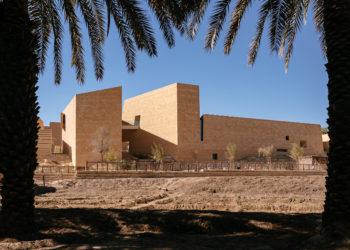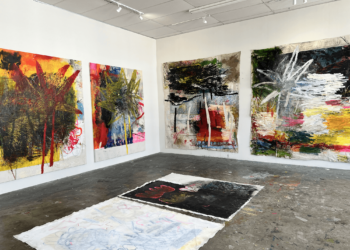Exploring the body as landscape through fragmented forms
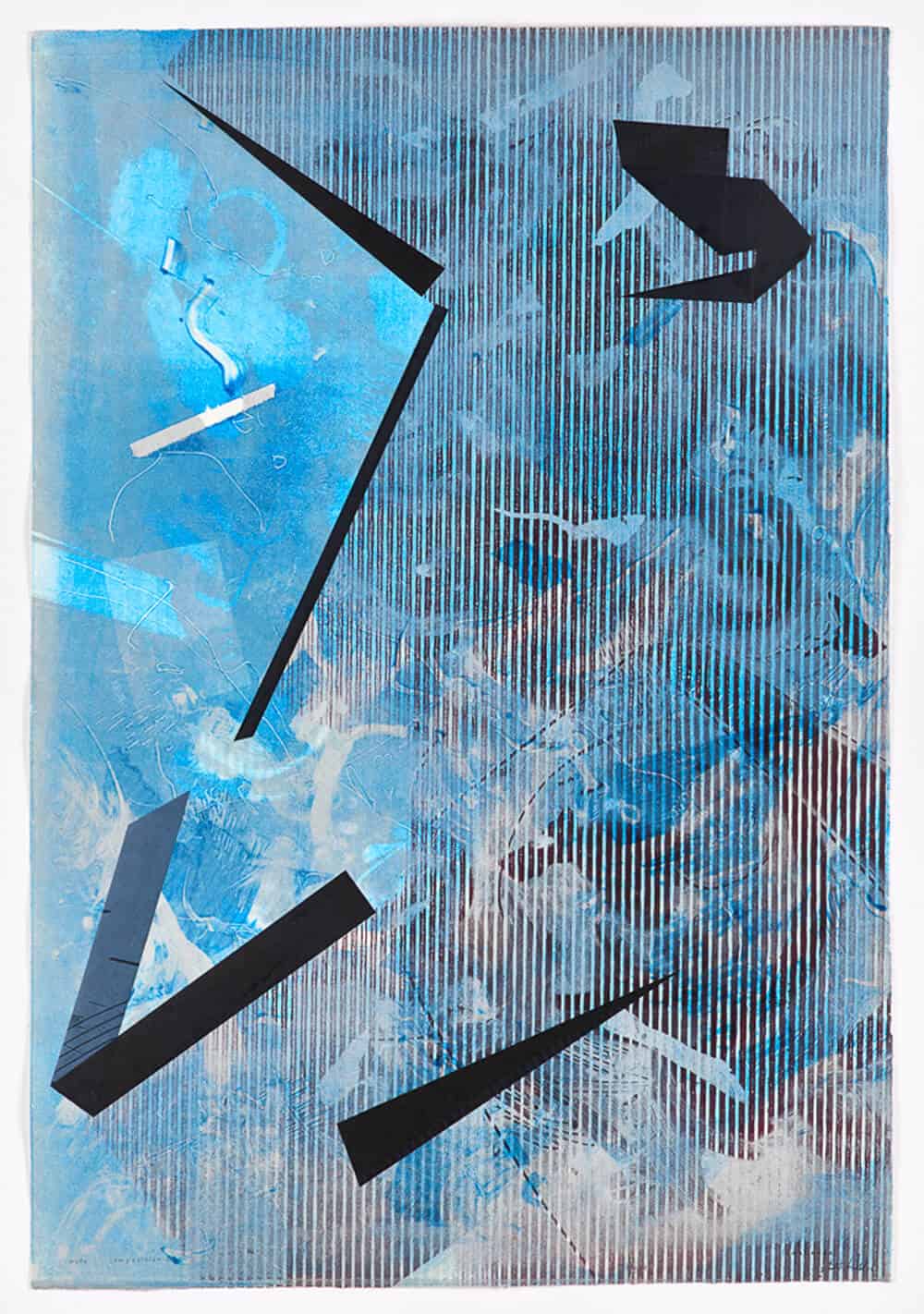 Bevan de Wet (with Io Makandal), Composition D I, 2017. Monotype, 78,5x54cm. Courtesy of the artists & Berman Contemporary.
Bevan de Wet (with Io Makandal), Composition D I, 2017. Monotype, 78,5x54cm. Courtesy of the artists & Berman Contemporary.
ART AFRICA spoke to Bevan de Wet about his current body of work, the relationship between structure and chance, organic and geometric forms, and what we can expect from him in the near future.
ART AFRICA: You work primarily in drawing, print-making, painting and collage, and are currently exploring the notion of the body as a concept of space, and the idea that both land and water are bodies themselves. Why have you chosen these mediums to best communicate these themes, and how do they do so successfully?
Bevan de Wet: Im traditionally a printmaker, and having studied it and printed for other artists for years, I continue to be fascinated with the techniques, especially those that belong to etching. There are constantly new things to learn and explore. Previously, my work involved more figurative explorations of the body – I working largely with anthropomorphism to explore the dichotomy between the civilized self and the instinctive, untamed self. This notion allowed me to create my own mythological language, through inventing new characters and narratives. I am still interested in the notion of the body but am now moving away from the figurative body and its connotations. Exploring the body as a concept of space is a way of describing landscape, and the fact that a mass of water, for instance, can be described as a body also contributes to the concept behind my work.
Water is currently an important topic across the globe, and especially in South Africa with the droughts and shortages. The type of ‘painting’ I’m doing involves water as the primary means for conveying marks. Some of the works allow the process of evaporation solely to create the marks, while others adopt its flow and movement to apply pigment to the paper. Printmaking is generally very calculated and precise, whereas the way I’m approaching some of this newer work allows for a lot more chance and looseness. The drawing and collage is a way of intervening this, by bringing back form and structure, as would be man’s imposition onto the landscape.
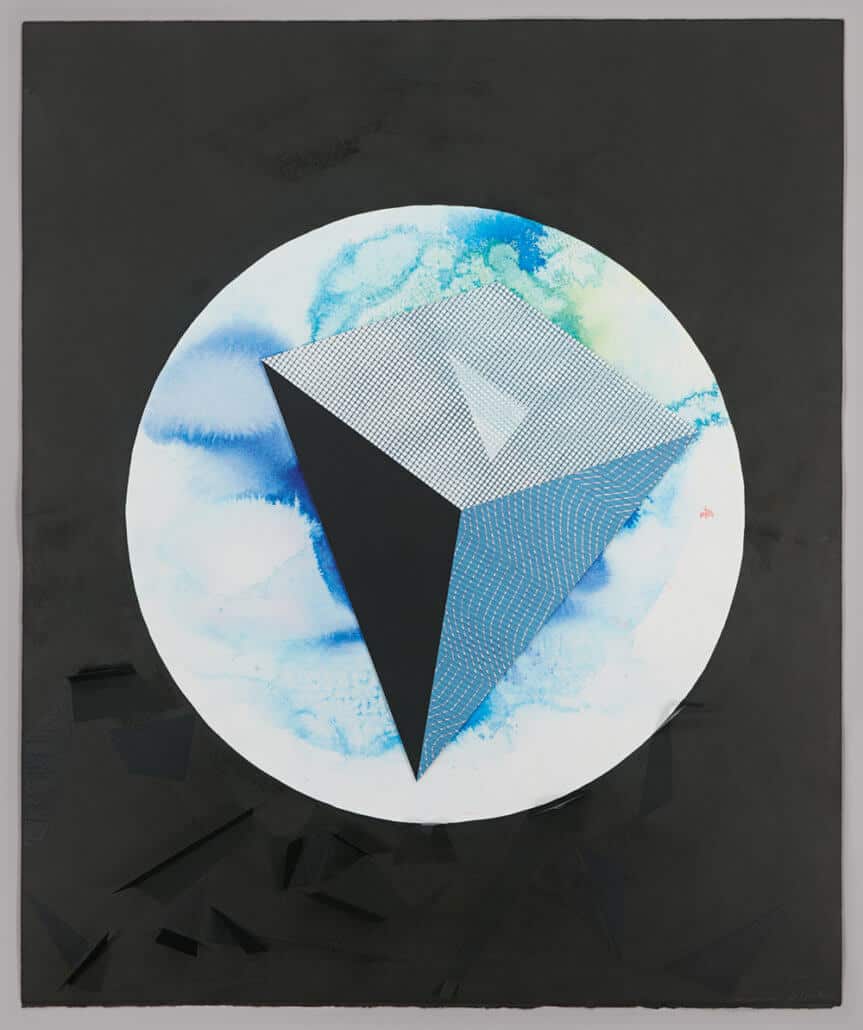 Bevan de Wet, Archetype Colour Study II, 2017. Ink, monotype and collage, 108x90cm. Courtesy of the artist & Berman Contemporary.
Bevan de Wet, Archetype Colour Study II, 2017. Ink, monotype and collage, 108x90cm. Courtesy of the artist & Berman Contemporary.
In your artist statement, you have said that “the deconstructed elements that previously mapped out the body’s surface, almost like topographical maps, now expand beyond it, to form extensive spatial platforms [and] allow for a new freedom beyond the confines of prescriptive figurative representation”. Could you please talk us through what exactly you mean by this?
A lot of the figurative work saw a constant process of fragmenting and deconstructing to create a more interesting visual tension amongst the forms within the image, attempting to break down the way it reads. This visual play on the body’s surface was constantly in a process of removing the traditions of the form – like shading etc – to explore it more as a surface for free thought, fragmentation and effectively a new way of ‘mapping’ out that surface. The result was that it began reading as a topographical map or a landscape on the surface, but it was still always confined to the form or silhouette of the body. My newer work seeks to explore the potential of those marks without that ‘bodily’ restrain, resulting in more expansive landscapes or spatial-scapes.
Working with a combination of structure and chance, organic and geometric forms, your work visually depicts tension in quite a bright, and ‘fun’ manner. Was this tension done purposefully, or did it happen naturally during the creation of these works?
Until a few years ago my work was very monochromatic, working predominantly in black, or black mixed with sepia or another dark shade. The shift into colour was like jumping from a cliff, the exploration started rapidly and haphazardly. By going more into painting I found there was more room and necessity to work with colour. Ive become quite seduced by bold colours, particularly pinks and blues. The blue is quite necessary with the work exploring water. Without a background in painting I don’t really know the rules about colour, mixing them, and their relationships. At the moment Im just playing with combinations I find interesting, and where they seemingly come together in the chaos.
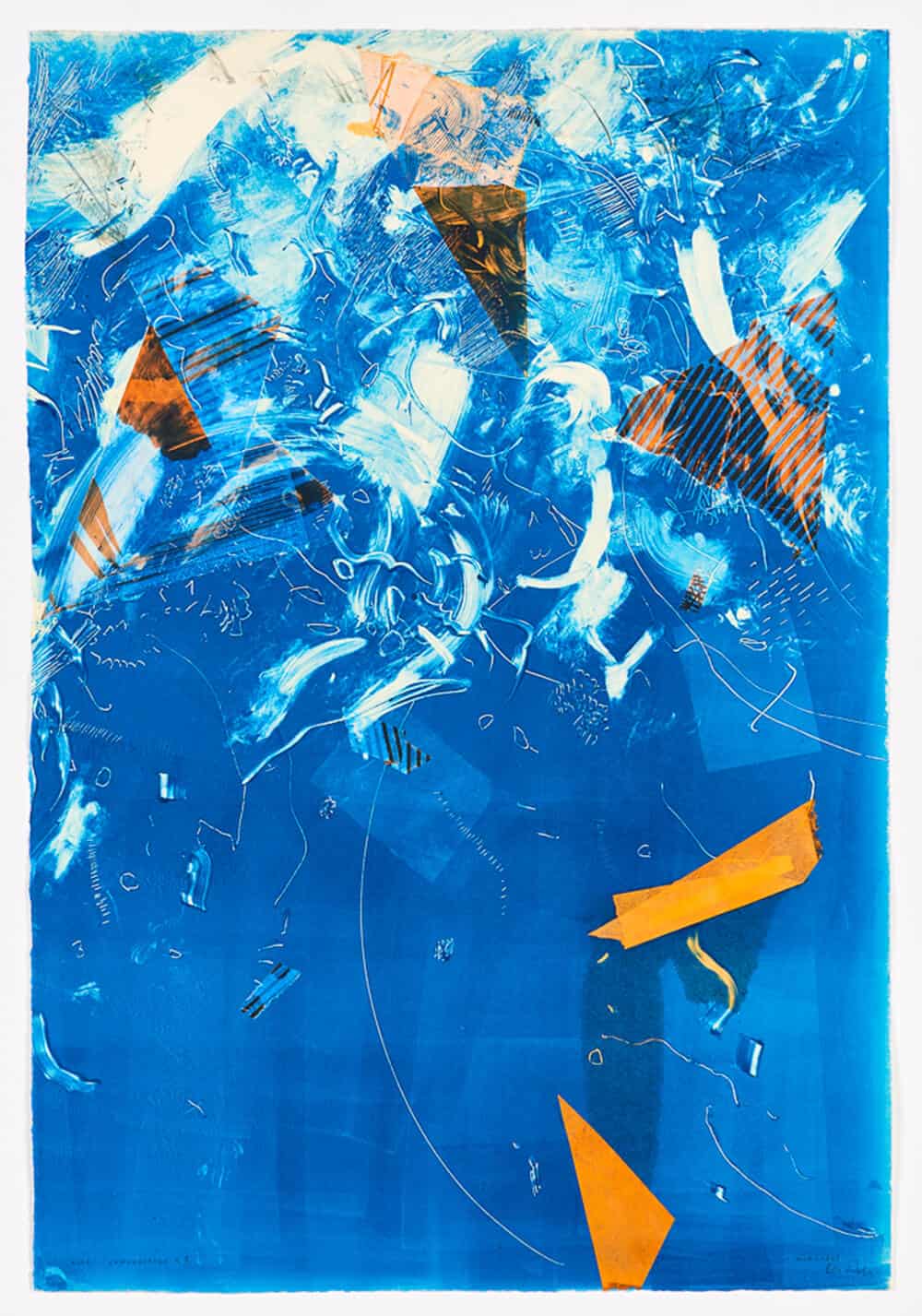 Bevan de Wet (with Io Makandal), Composition K II, 2017. Monotype, 78,5x54cm. Courtesy of the artist & Berman Contemporary.
Bevan de Wet (with Io Makandal), Composition K II, 2017. Monotype, 78,5x54cm. Courtesy of the artist & Berman Contemporary.
You worked with influential South African artists, such as Gerhard Marx, William Kentridge and Norman Catherine, during your time at the Artist Proof Studio in Johannesburg. Would you say that these artists had any impact on your practice, and if so – in what ways?
As a collaborating printer, your task is to work with the artist to effectively produce and edition their work. Often artists will have very complex ideas that are not necessarily confined to the norms of the medium which can produce many challenges. This often requires a lot of problem solving and when a desirable end is achieved in these tasks it’s usually most rewarding. The notion of collaboration is one of conversation, and there is constant learning from people when you need to engage with them about their practice and their intentions. Many of the artists are great teachers as well and have certainly helped guide me in my practice and working processes.
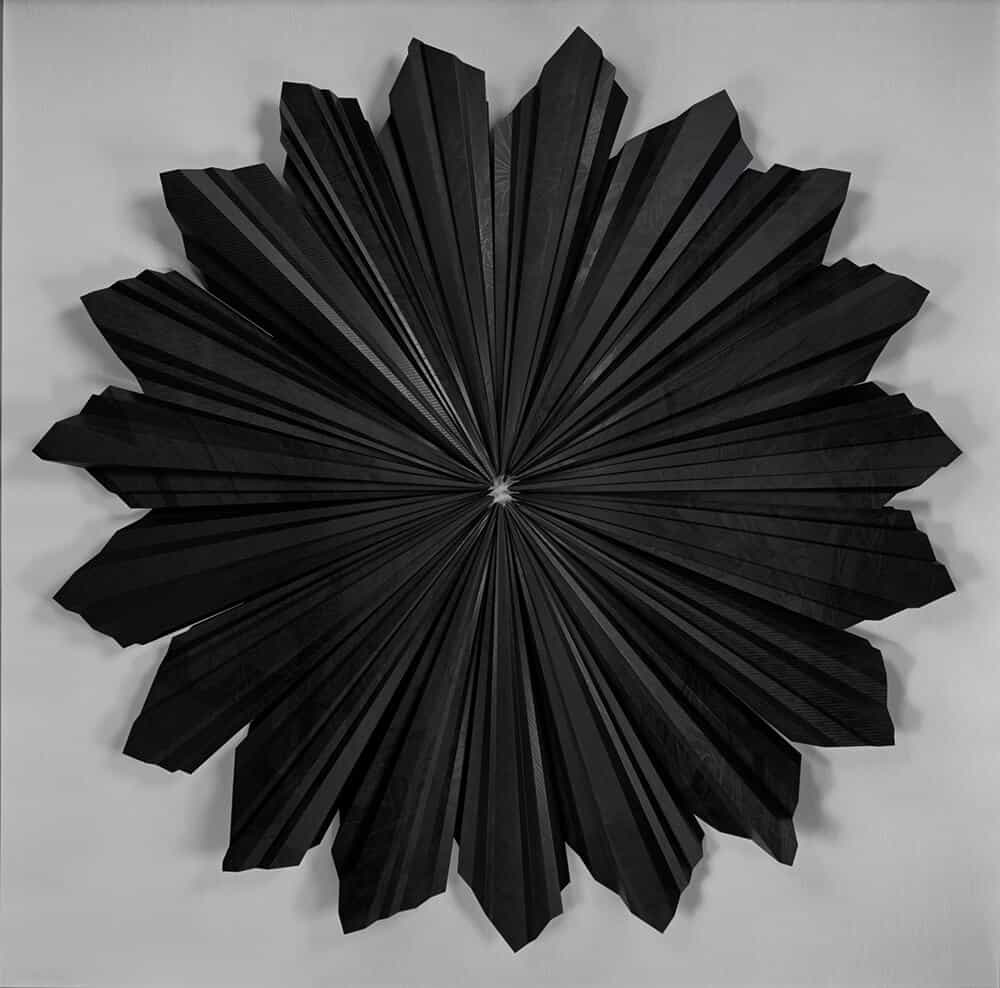 Bevan de Wet, Halo, 2017. Linocut on folder paper, 180x180cm. Courtesy of the artist & Berman Contemporary.
Bevan de Wet, Halo, 2017. Linocut on folder paper, 180x180cm. Courtesy of the artist & Berman Contemporary.
Lastly, what can we expect to see from you in the near future? Will you continue in your exploration of the materiality of paper as a medium, and the notion of the body as a concept of space?
I enjoy working with paper because of its versatility, I’m still learning how certain papers are better used for certain tasks and how it can be pushed to its limits, whether through embossing, folding, printing and painting.
Over the last few years I’ve been working at Phumani Archive Mill to make my own paper and handmade paper artworks. In this instance paper itself is not only the medium but the work in itself.
What I enjoy about making paper is that it can be completely tailored to your needs, yet it still has an unpredictable quality, making each work unique. Im currently working on a large body of work in which I am embedding and collaging other elements of various compositions into the handmade paper. The final result is envisioned as a large installation, each sheet is thin and somewhat translucent. These skin-like hanging pieces in the installation take on a ghostly, corporeal quality, and certainly reference bodies in space.
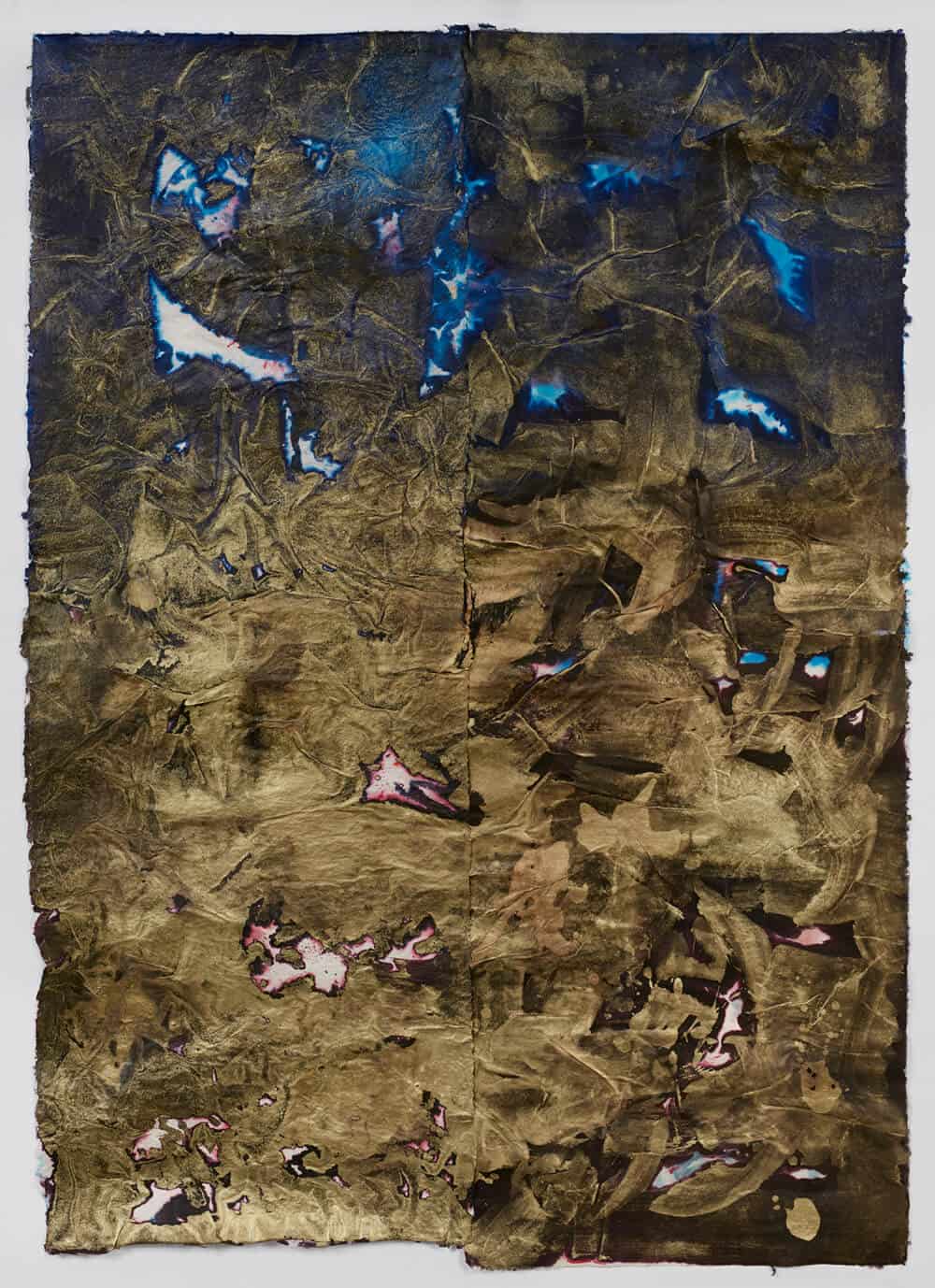 Bevan de Wet, Untitled (Undertow II), 2017. Handmade Sisal paper with ink, dye and gold pigment, 167x118cm. Courtesy of the artist & Berman Contemporary.
Bevan de Wet, Untitled (Undertow II), 2017. Handmade Sisal paper with ink, dye and gold pigment, 167x118cm. Courtesy of the artist & Berman Contemporary.

